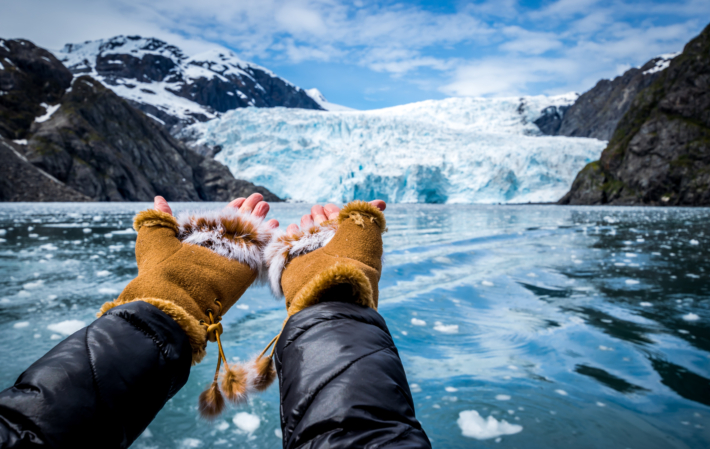Climate Change Is Normal and Natural, and Can’t Be Controlled
Editors’ Note: The global warming crowd would like nothing better than to convince you that we are in a climate crisis and that they need to grab COVID-like emergency powers to dictate how you live your life. If it were not for the sinister nature of the movement, which wishes to control everything from the way we cook, drive, eat, our power sources, and the like, it would be amusing that they think their efforts to curtail C02, amidst all the other independent variables that are completely out of their control, can create what they imagine as the perfect climate. They will fail to meaningfully change the climate but they may well succeed in taking our freedom, destroying all economic prosperity and impoverishing Americans.
NASA claimed that “Earth is warming at an unprecedented rate” and “human activity is the principal cause.” Others proposed spending trillions of dollars to control the climate. But are we humans responsible for climate change? And what can we do about it?
“The climate of planet Earth has never stopped changing since the Earth’s genesis, sometimes relatively rapidly, sometimes very slowly, but always surely,” says Patrick Moore in Fake Invisible Catastrophes and Threats of Doom. “Hoping for a ‘perfect stable climate’ is as futile as hoping the weather will be the same and pleasant, every day of the year, forever.”
In other words, climate change is normal and natural, and you can forget about controlling it.
For instance, a major influence of weather and climate is solar cycles driven by the Sun’s magnetic field over periods of eight to 14 years. They release varying amounts of energy and produce dark sunspots on the Sun’s surface. The effects of solar cycles on Earth vary, with some regions warming more than 1°C and others cooling.
Climatic changes occur as a result of variations in the interaction of solar energy with Earth’s ozone layer, which influences ozone levels and stratospheric temperatures. These, in turn, affect the speed of west-to-east wind flows and the stability of the polar vortex. Whether the polar vortex remains stable and close to the Arctic or dips southward determines whether winters in the mid-latitudes of the Northern Hemisphere are severe or mild.
In addition to solar cycles, there are three Milankovitch cycles that range in length from 26,000 to 100,000 years. They include the eccentricity, or shape, of Earth’s elliptical orbit around the Sun. Small fluctuations in the orbit’s shape influence the length of seasons. For example, when the orbit is more like an oval than a circle, Northern Hemisphere summers are longer than winters and springs are longer than autumns.
The Milankovitch cycles also involve obliquity, or the angle that Earth’s axis is tilted. The tilt is why there are seasons, and the greater the Earth’s tilt, the more extreme the seasons. Larger tilt angles can cause the melting and retreat of glaciers and ice sheets, as each hemisphere receives more solar radiation during summer and less during winter.
Finally, the rotating Earth, like a toy top, wobbles slightly on its axis. Known as precession, this third Milankovitch cycle causes seasonal contrasts to be more extreme in one hemisphere and less extreme in the other.
Moving from outer space to Earth, ocean and wind currents also affect the climate.
For instance, during normal conditions in the Pacific Ocean, trade winds blow from east to west along the Equator, pushing warm surface waters from South America towards Asia. During El Niño, the trade winds weaken and the warm water reverses direction, moving eastward to the American West Coast. Other times, during La Niña, the trade winds become stronger than usual, and more warm water is blown towards Asia. In the United States and Canada, these phenomena cause some regions to become warmer, colder, wetter, or drier than usual.
In addition to El Niño and La Niña, there is also the North Atlantic Oscillation, which is driven by low air pressure in the North Atlantic Ocean, near Greenland and Iceland (known as the sub-polar low or Icelandic low), and high air pressure in the central North Atlantic Ocean (known as the subtropical high or Azores High). The relative strength of these regions of low and high atmospheric pressures affects the climate in the Eastern United States and Canada and in Europe, affecting both temperatures and precipitation.
Similarly, Hadley cells are the reason Earth has equatorial rainforests that are bounded by deserts to the north and south. Because the Sun warms Earth the most at the Equator, air on either side of the Equator is cooler and denser. As a result, cool air blows towards the Equator as the warm, less dense equatorial air rises and cools, releasing moisture as rain and creating lush vegetation. The rising, drier air reaches the stratosphere blowing north and south to settle in regions made arid by lack of atmospheric moisture.
These and other phenomena influencing our climate are well beyond the control of humans.
*****
This article was published by The C02 Coalition and is reproduced with permission.



